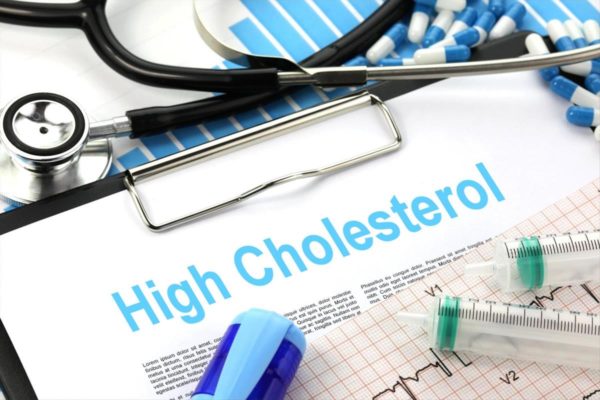“Naku, ma-cholesterol ‘yan!”
“Bawal ang mamantika, nakaka-cholesterol.”
“Kain ka nang kain ng baboy, mataas na siguro ang cholesterol mo.”
These are just a few remarks you’ll commonly hear from Filipinos talking about cholesterol. It’s very easy to find someone in every household who has high cholesterol levels and already taking cholesterol medication. You can even say it runs in the family. To a point, there’s a truth in that, because it’s not just health conditions that can be inherited, but eating habits as well. And more often than not, a person’s cholesterol levels are dictated by what they eat.
In this article, we’ll take a closer look at cholesterol — what is it, what’s the difference between good and bad cholesterol, and what you can do to maintain healthy cholesterol levels.

Cholesterol: A Brief Definition
A lot of people looking for health tips and reading health articles often want to learn about cholesterol and what role it plays. To understand it better, let us first define what it is.
Cholesterol is a waxy substance produced by the liver. Just like anything that our body naturally creates, it is not inherently bad. The body needs cholesterol for building cells, making vitamins, and producing hormones. However, as too much of anything is bad, the same goes for cholesterol.
The liver produces all the cholesterol that your body needs. When you eat foods high in saturated and trans fats, your liver tends to make more cholesterol than is actually required.
Good and Bad Cholesterol: The Difference Between HDL and LDL Cholesterol
It is recommended that people aged 20 and above get their cholesterol levels checked at least once every five years. Meanwhile, individuals aged 35 and older are generally advised to get tested more frequently. The blood test done to check cholesterol levels is called a lipid profile or lipid panel. This checks the levels of the following:
- Total cholesterol
- Low-density lipoprotein (LDL)
- High-density lipoprotein (HDL)
- Triglycerides
Low-Density Lipoprotein or LDL – The Bad Cholesterol
Also known as the bad cholesterol, LDL makes up most of the body’s cholesterol. It is coined as “bad” because it can contribute to fatty buildups in the arteries, a condition also known as atherosclerosis. When uncontrolled, LDL can build up and cause narrowing in the arteries. Having high LDL cholesterol levels can raise a person’s risk of developing heart disease and suffering a stroke.
High-Density Lipoprotein or HDL – The Good Cholesterol
Meanwhile, HDL is the type of cholesterol known as the good one. This lipoprotein absorbs cholesterol to carry it back to the liver, which then flushes the excess cholesterol from the body. When a person has high HDL cholesterol levels, they have a lower risk for heart disease and stroke.

Triglycerides – Another Bad Body Fat Indicator
The most common type of fat in the body, triglycerides store excess energy produced by the foods we eat. When you get a lipid profile blood work and it reveals you have high triglyceride and LDL levels and a low HDL level, it most likely means you have fatty buildup in your arteries. This makes you more susceptible to suffering heart attacks and stroke.
Why Getting Your Cholesterol in Check Matters
Cholesterol circulates in our blood. When there is more LDL than HDL, the latter cannot absorb all the excess bad cholesterol. As a result, they build up in the arteries, developing plaques. As more plaque builds up over time, the blood vessels narrow. As a result, blood flow to and from your heart and organs is compromised. Ultimately, this can lead to a heart attack or stroke.
Having your lipid profile tested as recommended allows you to know whether you need to make adjustments to your diet and lifestyle to maintain good cholesterol levels.
How to Reduce Cholesterol and Maintain Healthy Levels
While cholesterol medication can help improve and manage cholesterol levels, wouldn’t it be better to never need medication in the first place? Below are some ways you can do to start managing your cholesterol levels now.
1. Eat foods that promote heart health.
Diet plays an important role in your overall health and as such, it also directly affects your cholesterol levels. Some of the diet changes you can do to reduce and maintain cholesterol are:
- Reduce consumption of foods high in saturated fats, such as red meat and full-fat dairy products
- Avoid trans fats, which are found in foods that use hydrogenated vegetable oils such as store-bought baked goods
- Eat more foods rich in omega-3 fatty acids
- Increase consumption of soluble fiber, which is found in apples, Brussels sprouts, and oatmeal
2. Exercise often.
Living an active lifestyle also helps regulate cholesterol levels. For physically able individuals, it is recommended to exercise at least 30 minutes five times a week. You can begin by slowly adding low-impact and simple exercises to your daily routine. These include walking, biking, stretching, and even doing household chores.

3. Stop smoking.
Smoking, in general, won’t do your body any good. Quitting smoking can dramatically improve your HDL cholesterol level. Within 20 minutes of stopping, your heart rate and blood pressure can already begin recovering from the spike induced by smoking. Then, within three months after quitting, your lung function and blood circulation will start showing signs of improvement. After a year, your risk for developing heart disease will lower by half compared to when you were still smoking.
4. Drink moderately.
If you drink alcohol, do so occasionally and moderately. Too much alcohol can lead to various problems other than having high cholesterol levels. Those who drink moderately generally have higher HDL levels than those who drink more.
5. Lose weight.
Many people who are overweight have poor diet habits. Most are fond of sugary drinks, processed foods, and fatty foods. When you make it your goal to lose weight, you will basically need to change your diet and ideally, incorporate exercise into your daily activities, which are two of the best ways to lower bad cholesterol.
It’s Never Too Late to Take Control of Your Health
By following select and proven health tips, you can take back your health and start leading a healthier life. More importantly, don’t ignore cholesterol and think that it’s only a matter related to age. If you think you’re eating habits and lifestyle are a bit on the unhealthy side, you might have high bad cholesterol levels that you’re not aware of. Make health your investment and consult a trusted healthcare specialist near you who can provide you with professional advice and guidance.
Don’t miss any of our informative health articles — subscribe to our newsletter now! Follow Top Medical Magazine on Facebook, Instagram, and LinkedIn to stay updated, too!
References:
- What is Cholesterol?
- LDL and HDL Cholesterol: “Bad” and “Good” Cholesterol
- HDL (Good), LDL (Bad) Cholesterol and Triglycerides
- Understanding Cholesterol Numbers
- Top 5 lifestyle changes to improve your cholesterol


